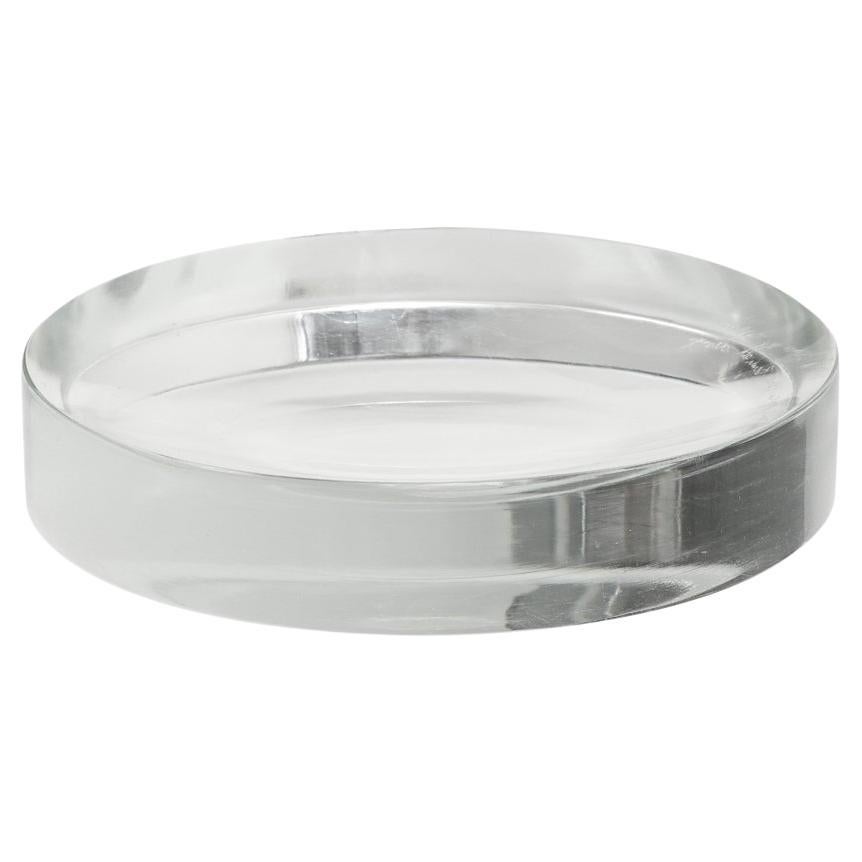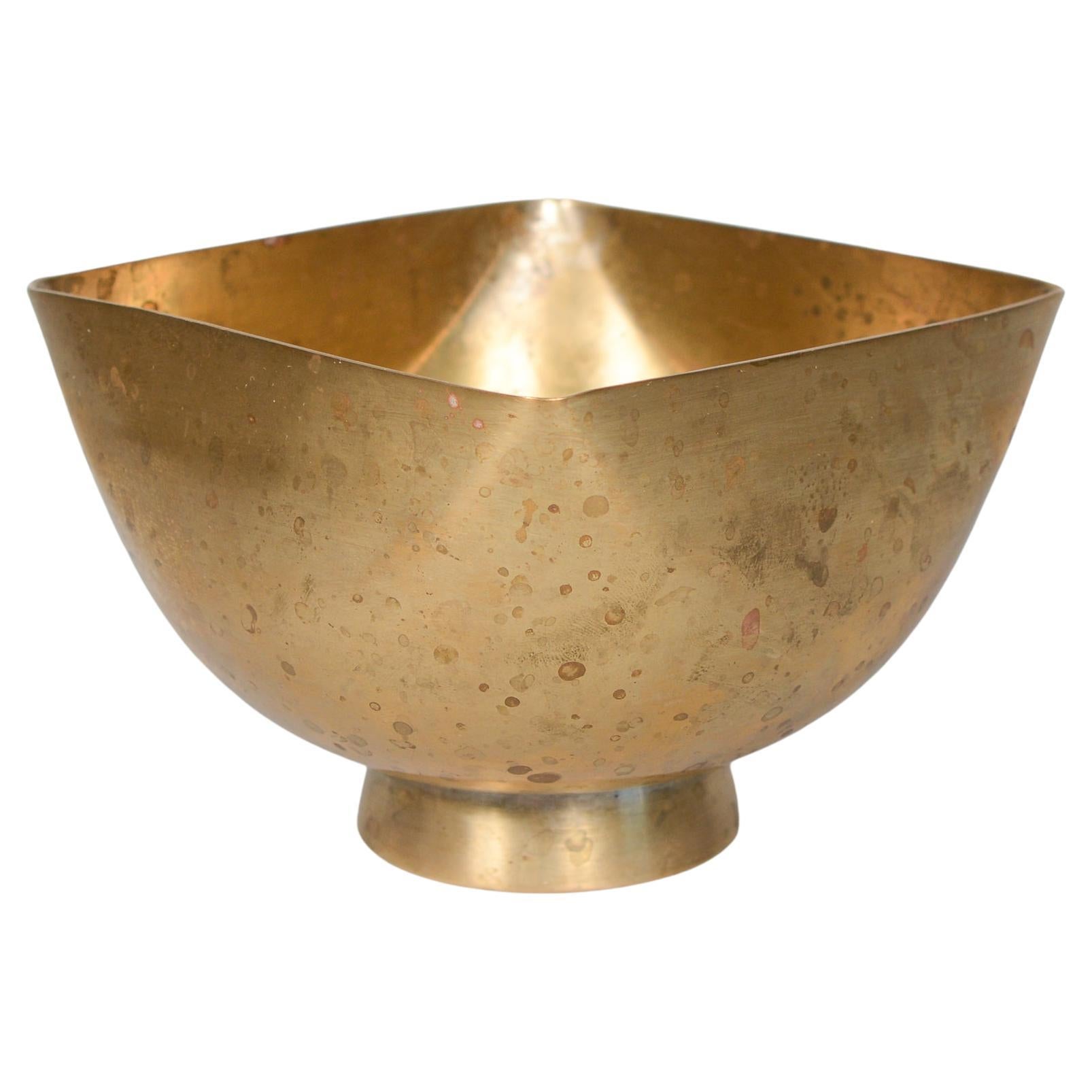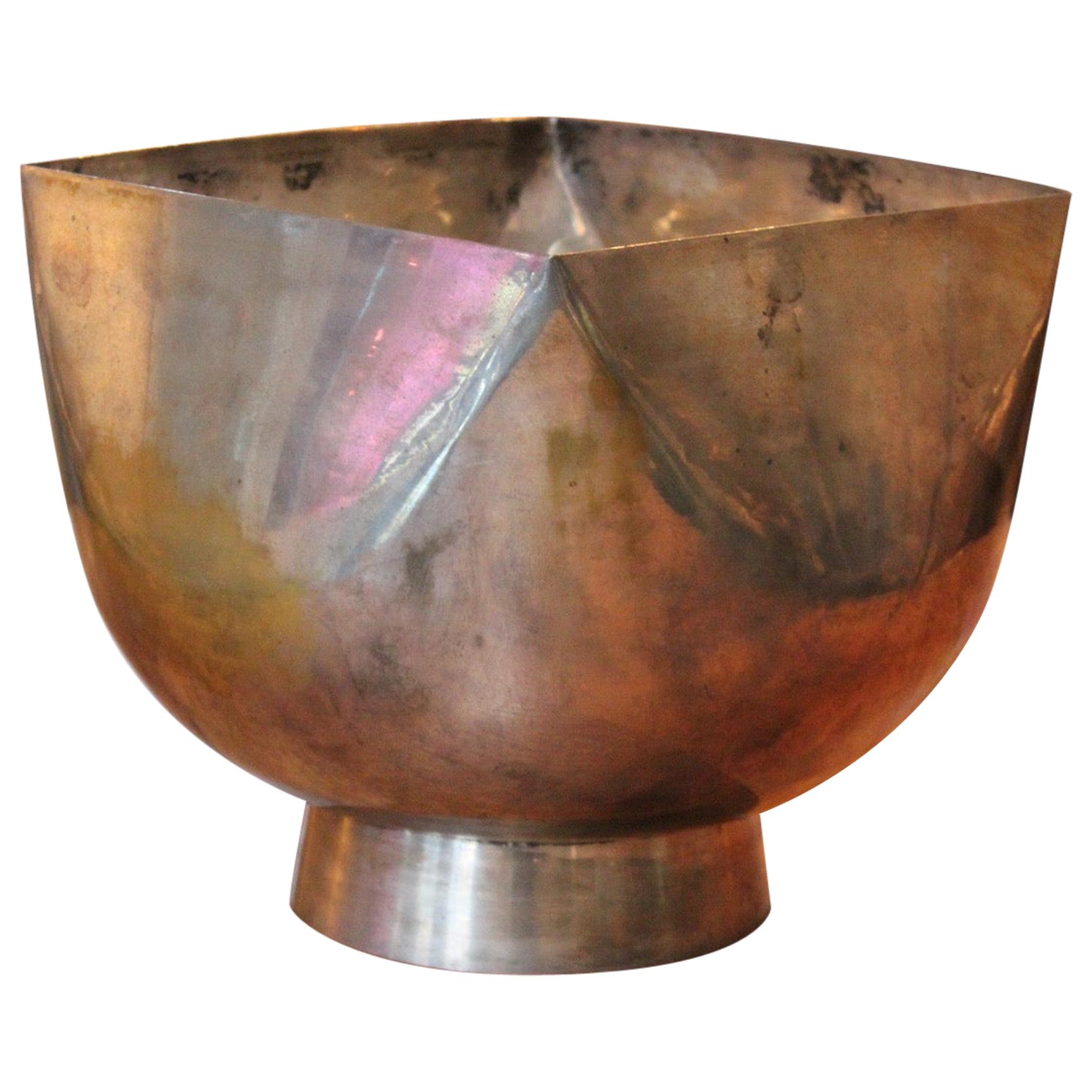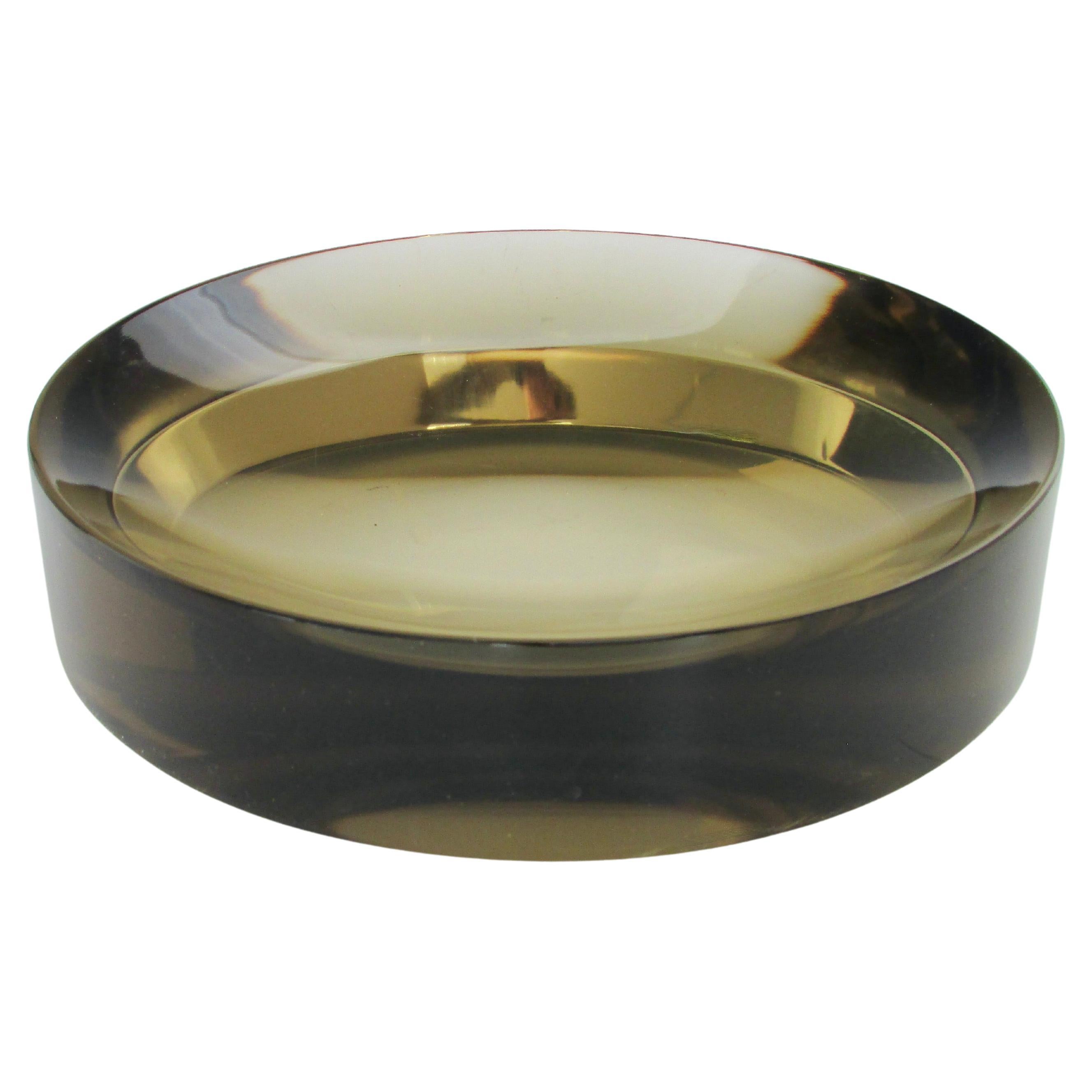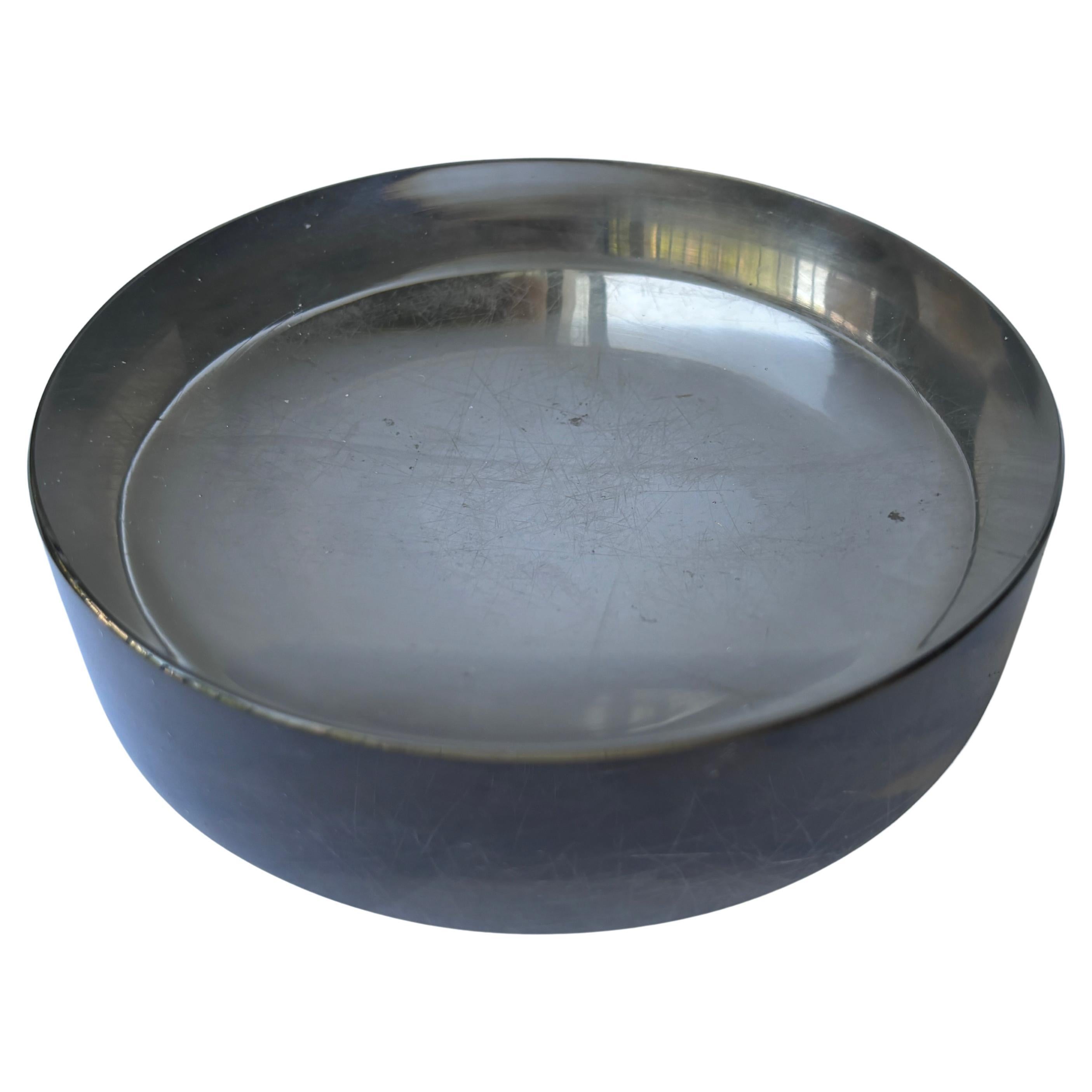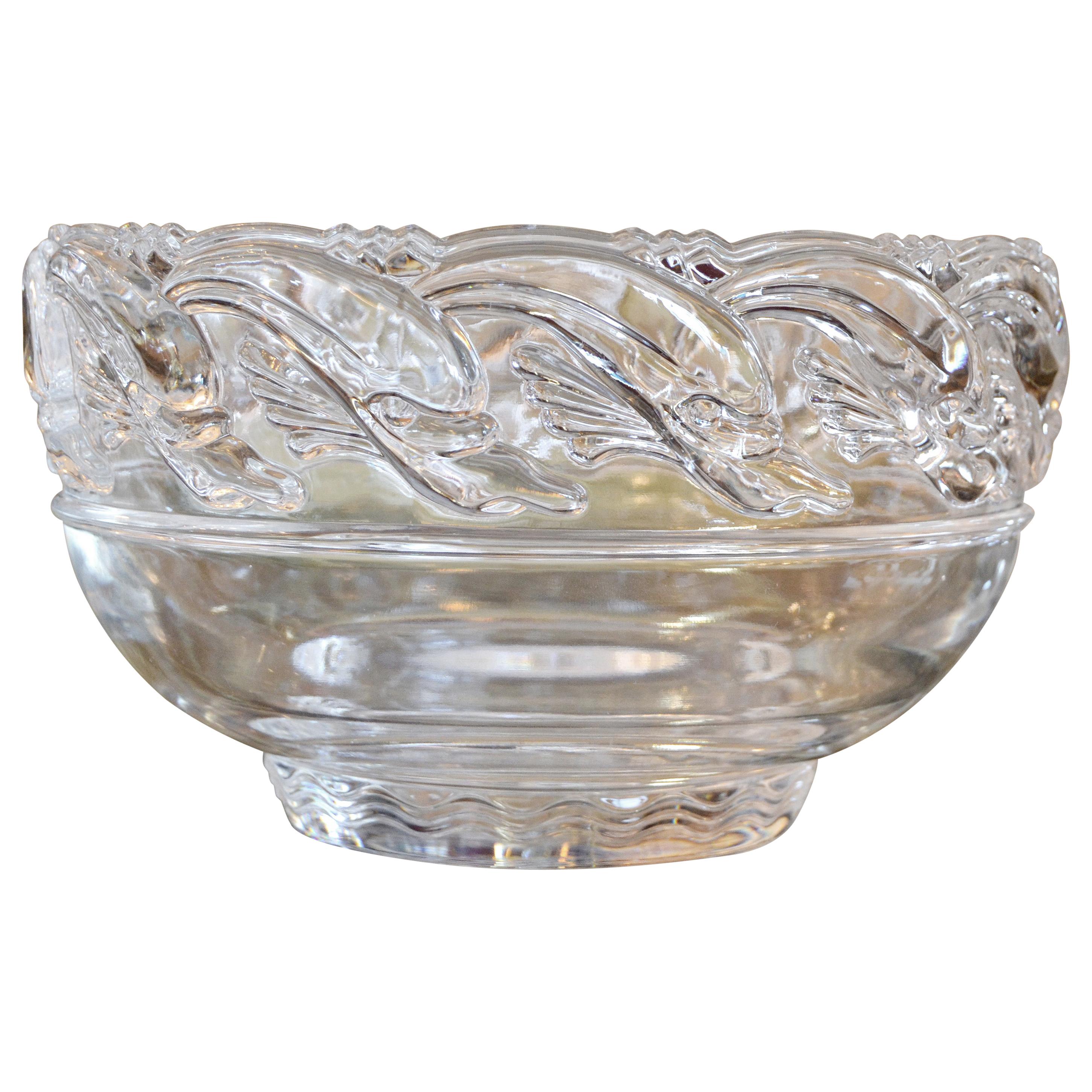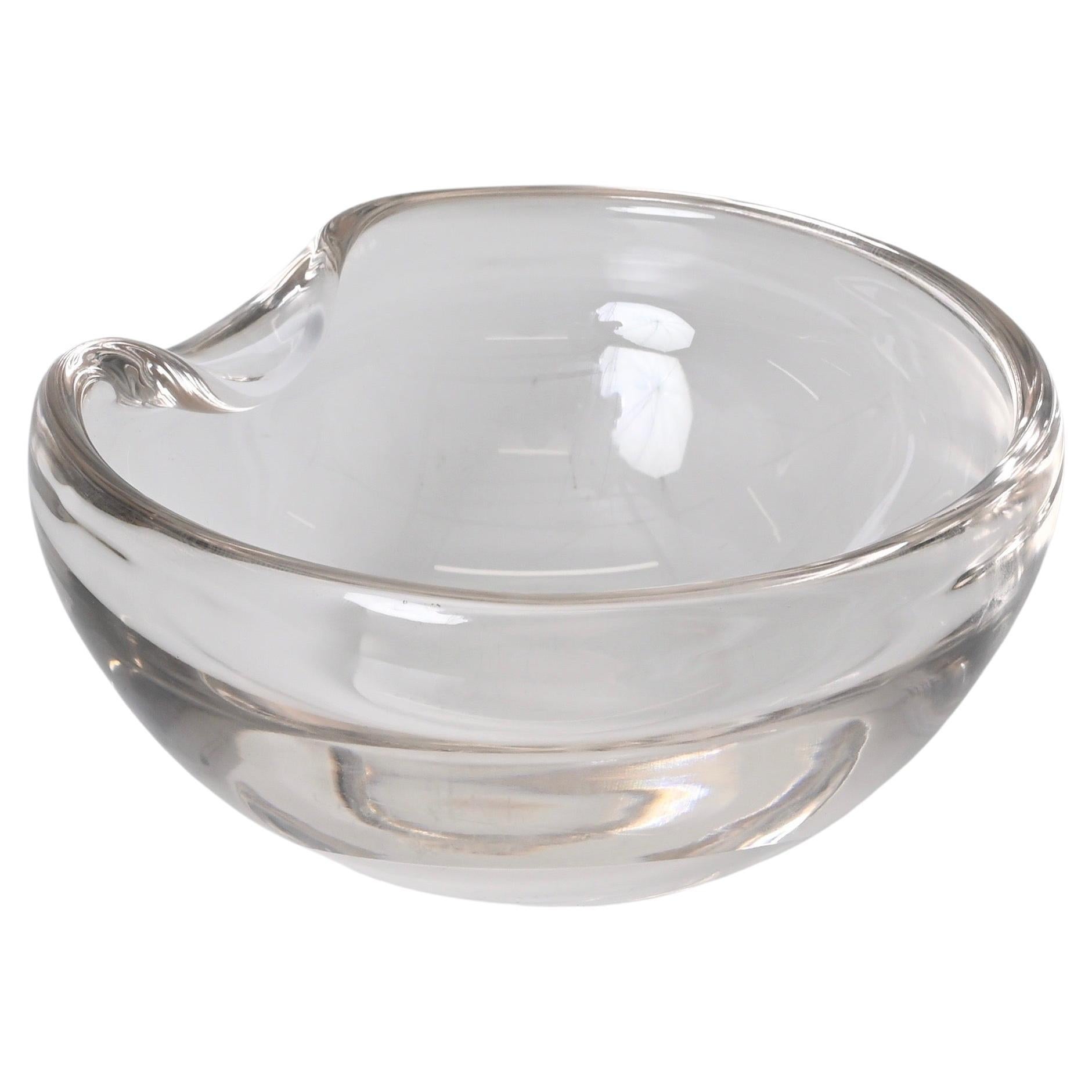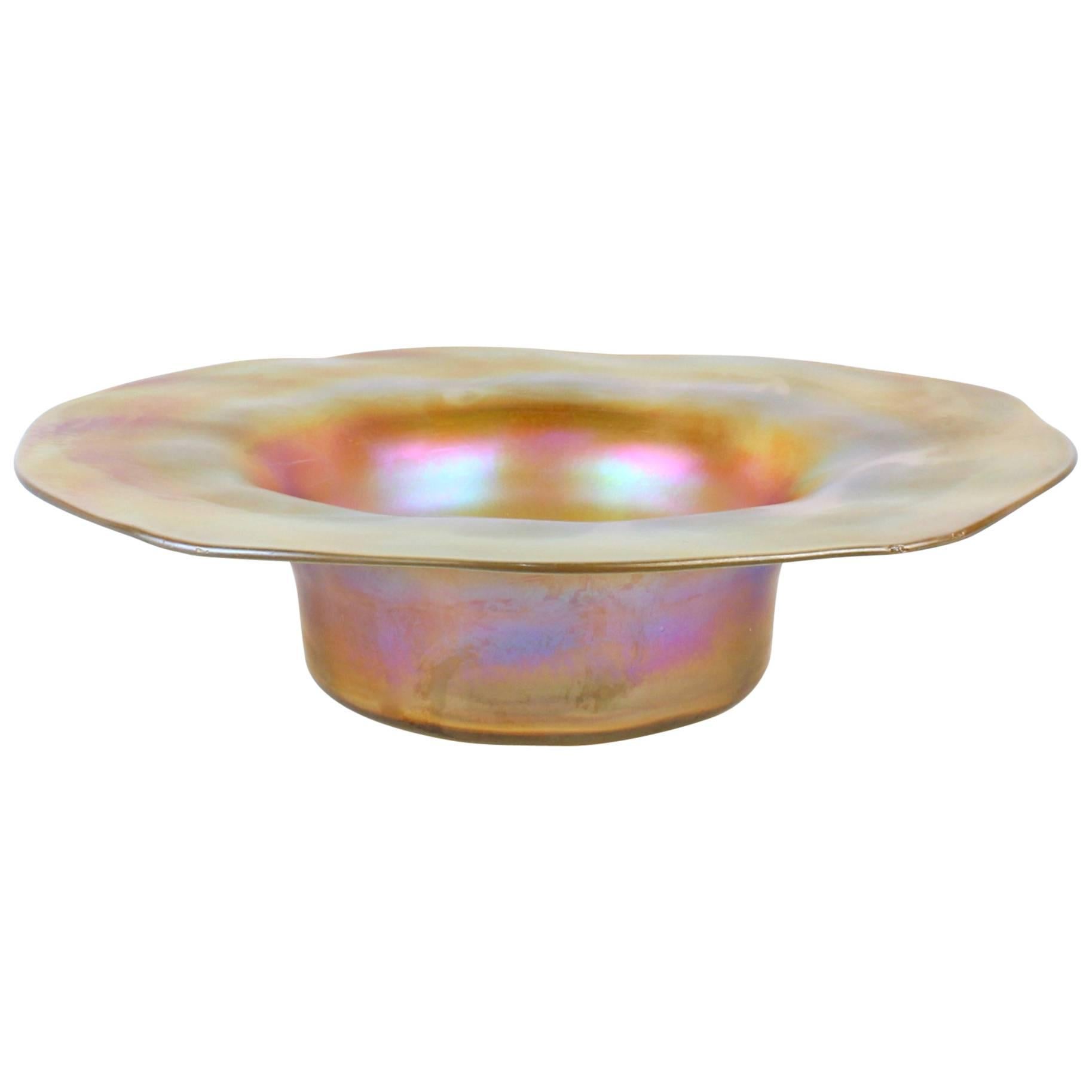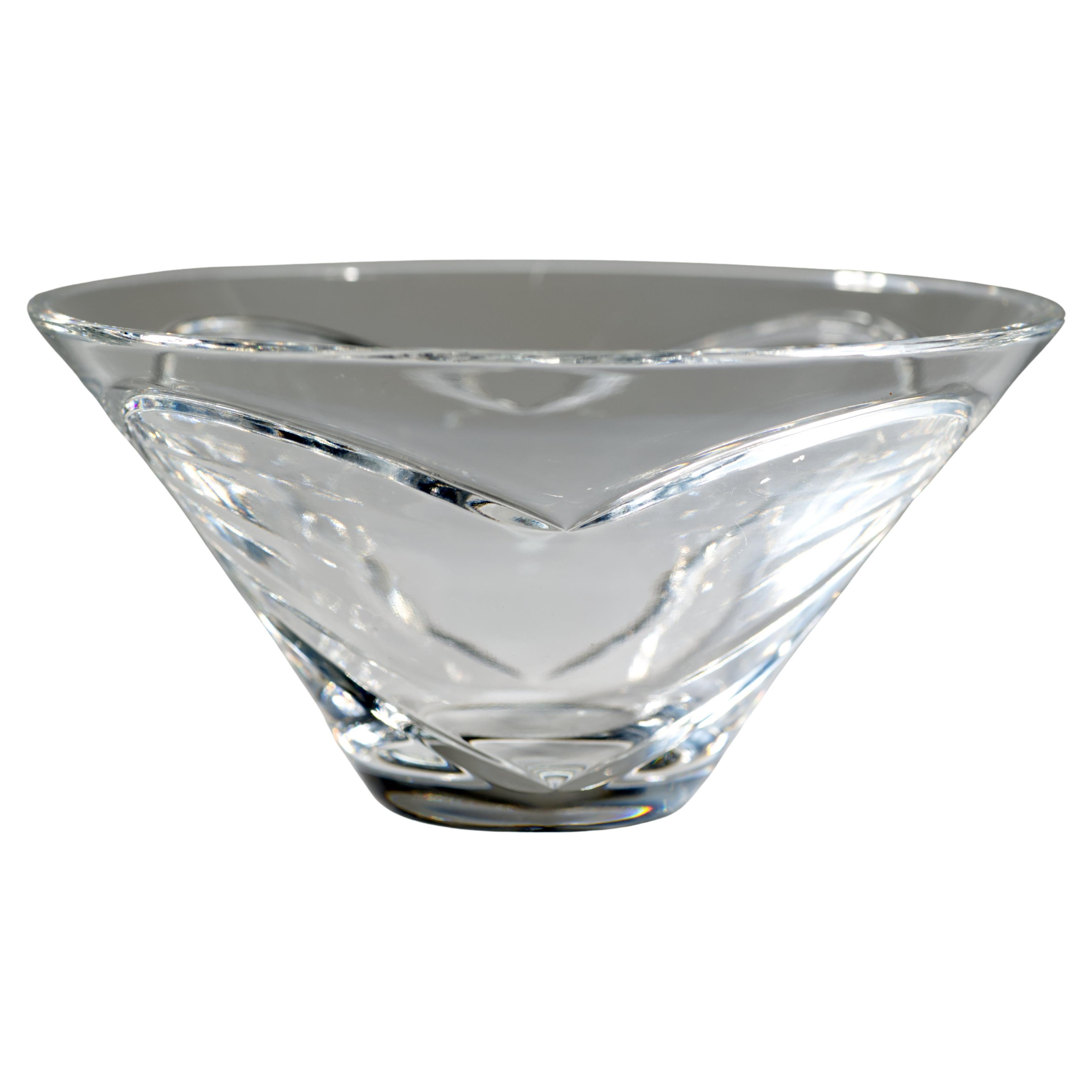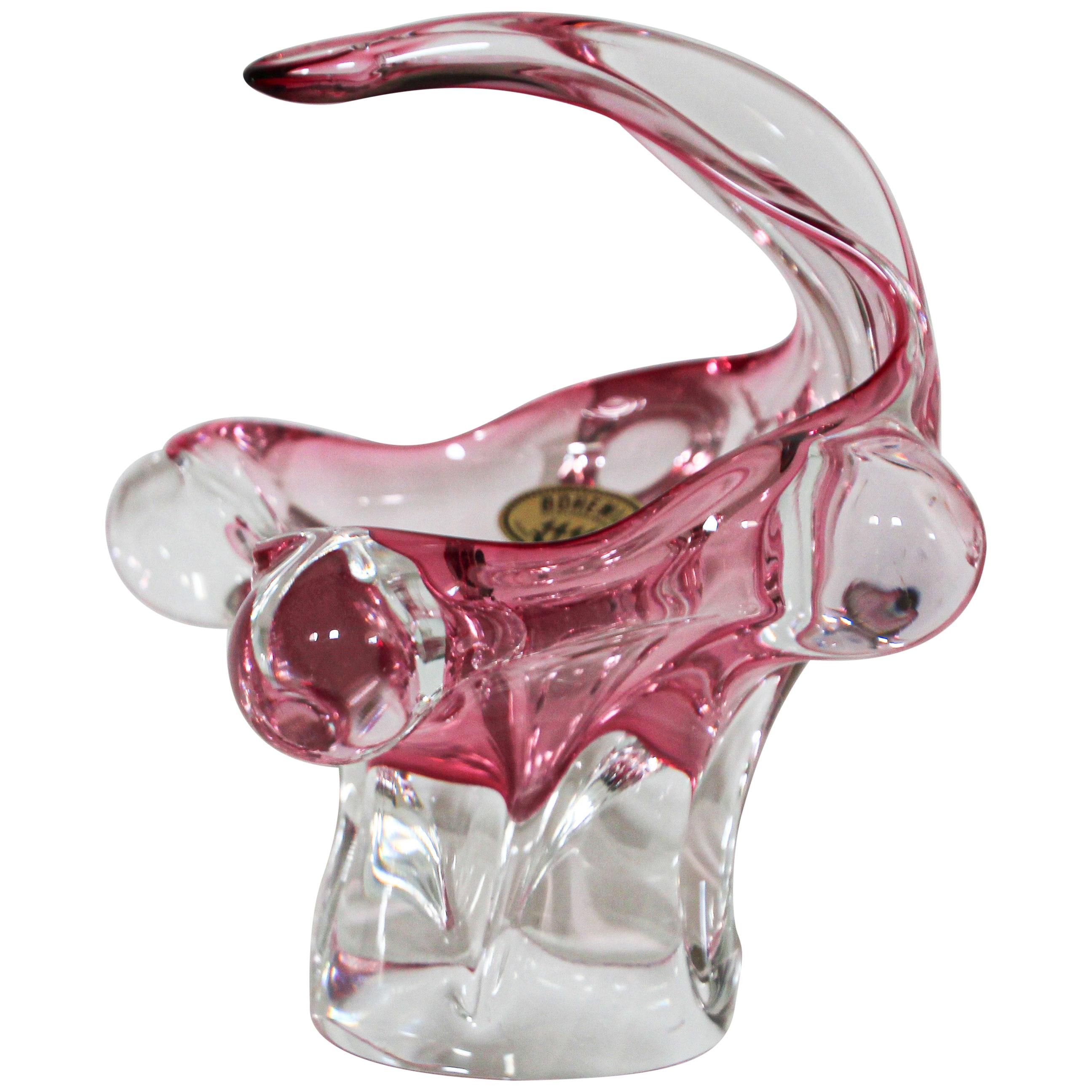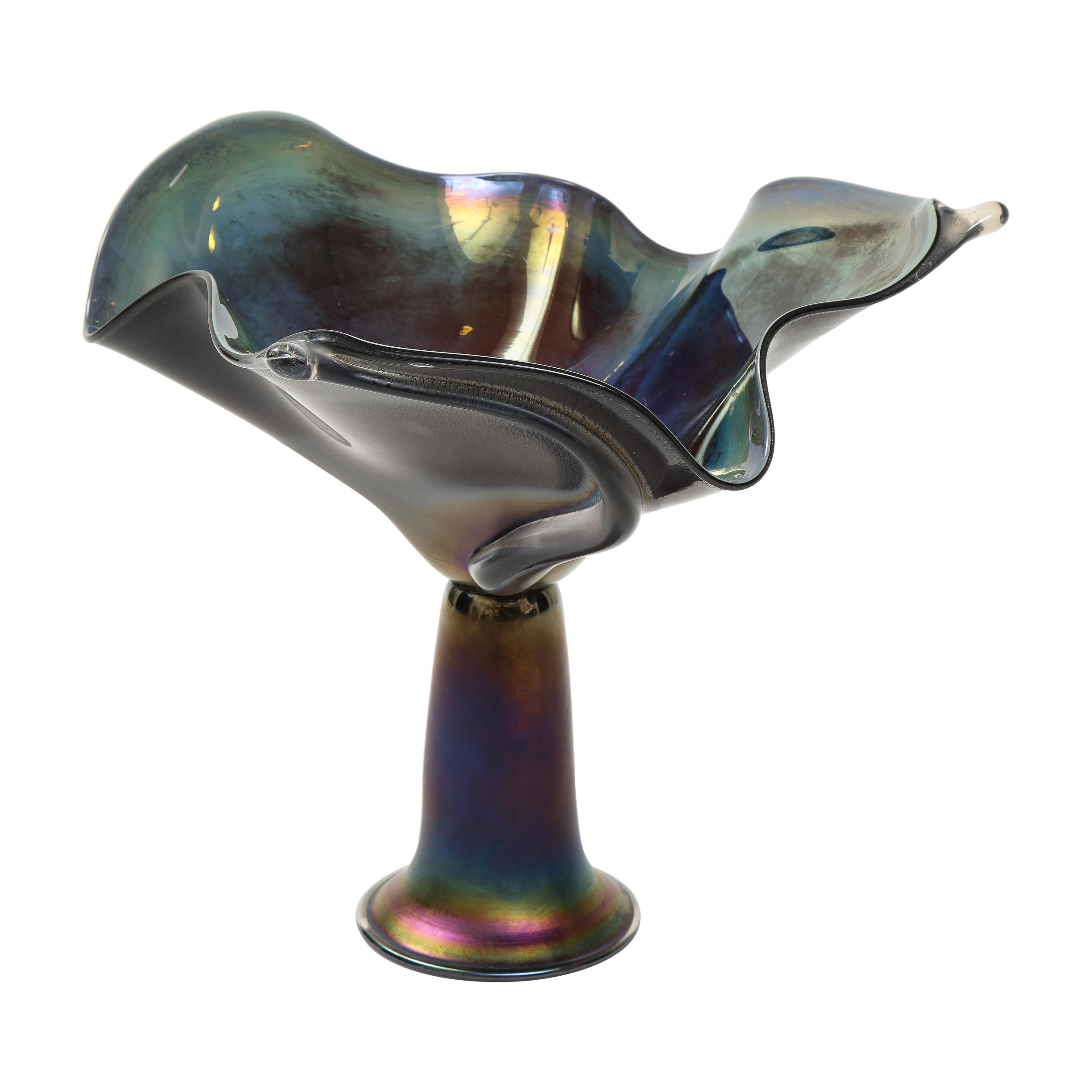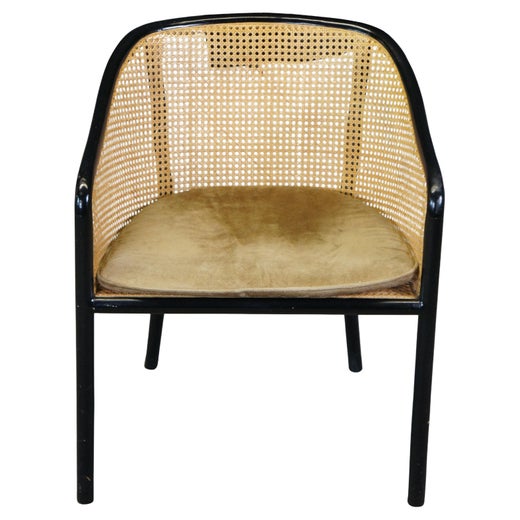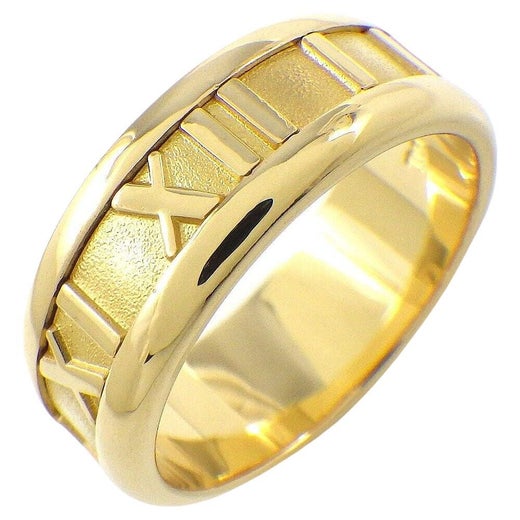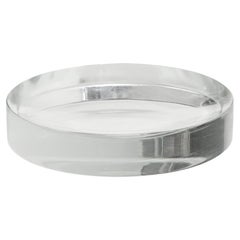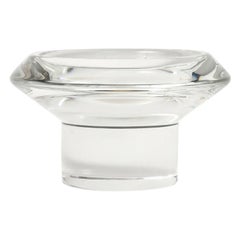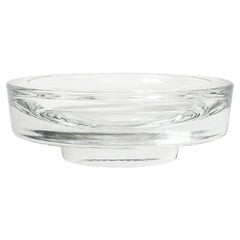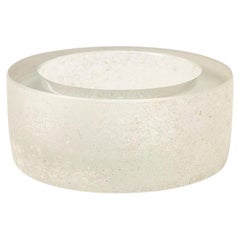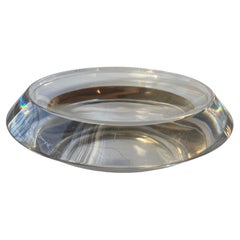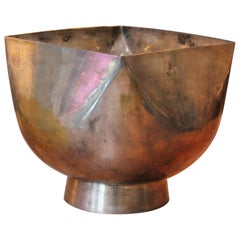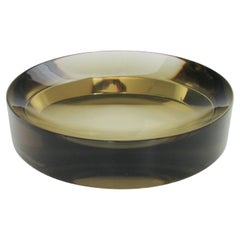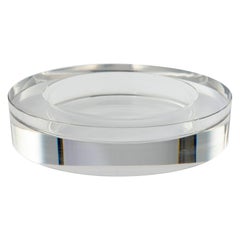
Ward Bennett for Tiffany Bowl, Glass, Crystal, Signed
View Similar Items
Ward Bennett for Tiffany Bowl, Glass, Crystal, Signed
About the Item
- Creator:Ward Bennett (Designer),Tiffany & Co. (Maker)
- Dimensions:Height: 1.5 in (3.81 cm)Diameter: 7 in (17.78 cm)
- Style:Mid-Century Modern (Of the Period)
- Materials and Techniques:
- Place of Origin:
- Period:1980-1989
- Date of Manufacture:1980
- Condition:Wear consistent with age and use.
- Seller Location:New York, NY
- Reference Number:1stDibs: LU956924187282
Ward Bennett
Ward Bennett created everything from interiors and furniture to textiles and flatware. The unsung New York City-born modernist designer drew on the work of Le Corbusier and Auguste Rodin, studied art with the likes of Abstract Expressionist painter Hans Hofmann and counted legendary American luxury house Tiffany & Co. among his clients. For decades, Bennett created and filled spaces that were elegant, minimalist and deeply appealed to everyone who laid eyes on them.
Bennett left home and school at the young age of 13. He found work in Manhattan’s Garment District, and within a few years, Bennett traveled to Europe on behalf of a clothing manufacturer to gather ideas for modern garments. He lived abroad as a young man, and when he returned to New York, during the early 1940s, he assisted fashion entrepreneur Hattie Carnegie as a window dresser.
Bennett would also go on to share a sculpture studio with artist Louise Nevelson. He ventured into the world of jewelry design, creating necklaces, bracelets and other pieces with Richard Pousette-Dart. The Whitney Museum of American Art exhibited his sculptures, and it wouldn’t be long before the Museum of Modern Art included Bennett’s personal adornments with accessories by the likes of Alexander Calder, Harry Bertoia and Anni Albers in its 1946 “Modern Handmade Jewelry” show.
Bennett didn’t take the plunge into interior design work until he was 30 years old — his inaugural project was an apartment in Manhattan and his clients were family members. He had no formal training in architecture or decorating — and would ultimately design a mere handful of houses in his life — so for his inviting leather office chairs, marble-topped tables and sleek storage cabinets, Bennett relied only on what he learned in the fashion world. Soon, every time he redecorated his own home — an elaborate apartment comprising former maids’ quarters in New York City’s magnificent Dakota building — it earned splashy coverage in the newspapers.
Bennett’s client list eventually included David Rockefeller and Chase Manhattan Bank, Tiffany & Co., Sasaki, Italian industrialist Gianni Agnelli, and others, and during the 1970s he became in-house designer for Brickel Associates, a role that would endure for more than two decades. His work is on permanent view at the Museum of Modern Art and the Cooper-Hewitt National Design Museum in New York.
On 1stDibs, find vintage Ward Bennett seating, decorative objects and more.
Tiffany & Co.
Tiffany & Co. is one of the most prominent purveyors of luxury goods in the United States, and has long been an important arbiter of style in the design of diamond engagement rings. A young Franklin Delano Roosevelt proposed to his future wife, Eleanor, with a Tiffany ring in 1904. Vanderbilts, Whitneys, Astors and members of the Russian imperial family all wore Tiffany & Co. jewelry. And Jacqueline Kennedy Onassis preferred Tiffany china for state dinners at the White House.
Although synonymous with luxury today, the firm started out rather modestly. Charles Lewis Tiffany and John B. Young founded it in Connecticut as a “stationery and fancy goods emporium” in 1837, at a time when European imports still dominated the nascent American luxury market. In 1853, Charles Tiffany — who in 1845 had launched the company’s famed catalog, the Blue Book, and with it, the firm’s signature robin’s-egg blue, which he chose for the cover — shifted the focus to fine jewelry.
In 1868, Tiffany & Co. gained international recognition when it became the first U.S. firm to win an award for excellence in silverware at the Exposition Universelle in Paris. From then on, it belonged to the pantheon of American luxury brands.
At the start of the Gilded Age, in 1870, Tiffany & Co. opened its flagship store, described as a "palace of jewels" by the New York Times, at 15 Union Square West in Manhattan. Throughout this period, its designs for silver tableware, ceremonial silver, flatware and jewelry were highly sought-after indicators of status and taste. They also won the firm numerous accolades, including the grand prize for silverware at the Paris Exposition of 1878. Among the firm’s glittering creations from this time are masterworks of Art Nouveau jewelry, such as this delicate aquamarine necklace and this lavish plique-à-jour peridot and gold necklace, both circa 1900.
When Charles Lewis Tiffany died, in 1902, his son Louis Comfort Tiffany became the firm’s design director. Under his leadership, the Tiffany silver studio was a de facto design school for apprentice silversmiths, who worked alongside head artisan Edward C. Moore. The firm produced distinctive objects inspired by Japanese art and design, North American plants and flowers, and Native American patterns and crafts, adding aesthetic diversity to Tiffany & Co.’s distinguished repertoire.
Tiffany is also closely associated with diamonds, even lending its name to one particularly rare and exceptional yellow stone. The firm bought the Tiffany diamond in its raw state from the Kimberley mines of South Africa in 1878. Cut to create a 128.54-carat gem with an unprecedented 82 facets, it is one of the most spectacular examples of a yellow diamond in the world.
In a broader sense, Tiffany & Co. helped put diamonds on the map in 1886 by introducing the American marketplace to the solitaire diamond design, which is still among the most popular engagement-ring styles. The trademark Tiffany® Setting raises the stone above the band on six prongs, allowing its facets to catch the light. A lovely recent example is this circa-2000 platinum engagement ring. Displaying a different design and aesthetic (but equally chic) is this exquisite diamond and ruby ring from the 1930s.
Find Tiffany & Co. jewelry, serveware and decorative objects for sale on 1stDibs.
More From This Seller
View AllVintage 1970s American Mid-Century Modern Decorative Dishes and Vide-Poche
Glass
Vintage 1980s Italian Mid-Century Modern Decorative Bowls
Art Glass, Blown Glass
Vintage 1980s Italian Mid-Century Modern Decorative Bowls
Art Glass, Blown Glass
Vintage 1980s Italian Mid-Century Modern Decorative Bowls
Art Glass
Vintage 1960s Italian Mid-Century Modern Decorative Bowls
Ceramic
Vintage 1970s Italian Mid-Century Modern Decorative Bowls
Blown Glass, Sommerso
You May Also Like
Vintage 1960s Italian Modern Decorative Bowls
Glass
Vintage 1970s American Mid-Century Modern Decorative Bowls
Brass
Vintage 1970s Decorative Bowls
Silver Plate
Mid-20th Century American Mid-Century Modern Decorative Dishes and Vide-...
Glass
Mid-20th Century American Modern Decorative Dishes and Vide-Poche
Art Glass
Late 20th Century American Mid-Century Modern Decorative Bowls
Crystal
Recently Viewed
View AllRead More
Unexpected Gems Were All Over the Latest High-Jewelry Collections
Diamonds and sapphires still played a starring role, but less popular stones popped up too.
The Sparkling Legacy of Tiffany & Co. Explained, One Jewel at a Time
A gorgeous new book celebrates — and memorializes — the iconic jeweler’s rich heritage.

